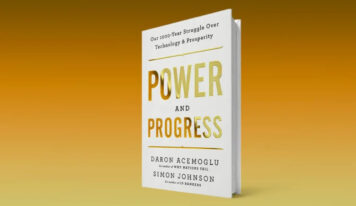The Discipline of Building Breakthroughs
Larry Keely, Ryan Pikkel, Brian Quinn, Helen Walters
Central Ideas:
1 – In 1998, 2,000 examples of the best innovations from companies like Dell, Toyota, and Gillete were collected. They were reanalyzed in 2011. From this study came the list of 10 Types of Innovation (10TI): Profit Model, Network, Structure, Process, Product Performance, Product System, Services, Channel, Brand, and Customer Engagement.
2 – Examples of Profit Model innovations include special pricing, when companies figure out how to charge more than competitors for a product or service; or auctions, a situation in which the market determines the price of the product.
3 – Network innovations offer an alternative for companies to take advantage of other companies’ processes, technologies, products, services, channels, and brands. These collaborations can be formed between close allies or even staunch competitors.
4 – Product bundling, or the organization and sale of several related products in a single package, is a common example of Product System Innovation. Technology companies often use this type of innovation to create platforms.
5- Use a sufficient number of innovation types to attract attention. Using five or more types, carefully integrated, is enough to reinvent a category and make it notable.
About the authors:
Larry Keely is a leader in effective innovation, a topic he addresses as a professor at design and business educational institutions and as a speaker and author. In company with his mentor Jay Doblin, he founded Doblin in 1981 and since 2013 has been a director at Monitor Deloitte.
Ryan Pikkel, the design strategist at Doblin, is responsible for guiding clients and teams through innovative programs to develop solutions that can benefit the client and end user. He has established innovation resources in Seoul and Mumbai.
Brian Quinn, one of Doblin’s leaders, is responsible for developing and overseeing scaled innovation programs with key customers and works with them to innovate and become more effective innovators. He works on improving 10TI.
Helen Walters is a writer, editor, and researcher at Doblin. Previously the innovation and design editor at BusinessWeek, she started working at Doblin to help develop editorial strategies, including this book. She is part of the 10TI team.
Introduction
We extol the talented innovators of our times, whether Thomas Edison or Steve Jobs, but we are often led to conclude that the success of an innovation depends on extremely talented individuals. Real evidence points in another direction. It turns out that disciplined teams using effective methods achieve results 10 or even 20 times better than current global norms.
Innovation is a team sport and is not the domain of rare geniuses or a chosen few. Anyone can (and should) innovate, and with practice, anyone can hone their innovation skills. Simply put, there is no longer an excuse not to innovate.
Executives need to understand not only that they can expect innovation from anyone in their organization – but also that they are doing themselves and the company a disservice when they don’t. The most innovative organizations rely on systems of individuals and internal cross-functional teams. Innovation is not the work of just scientists, engineers, or marketers; it is work that involves the entire company and its leadership.
The discovery of ten types of innovation (10TI)
In 1998, we decided to examine what successful innovations actually had in common. In doing so, our goal was to see if we could create a version of the periodic table of chemical elements for innovation.
We collected about 2000 examples of the best innovations at that time: Dell’s computer segment; Toyota’s production system; Gillette’s razor segment; Prince’s oversized tennis racquets; the way you can deliver a rental car from Hertz and get an instant invoice from someone with a device on their belt; and many others. We even include historical successes like the Ford Model T and the US national highway system (yes, it was once innovative, not simply a tangled mess of traffic).
We then analyze everything and break down the innovations using pattern recognition and complexity management techniques. We work to demystify our own work as innovators. And we strive to document our methods and their results. In 2011, we undertook a similar initiative to test and update our analysis to see if our work was still valid in an extremely different business environment at that time. From this empirical analysis emerged a framework that forms the essence of this book. Some combination of the 10TIs is used reliably in any proposed innovation. And that structure is a version of the periodic table. The tactics we present to you later in this book are our chemical elements, which can be favorably associated to create successful acts of innovation.
The list of the ten types of innovation (10TI) discussed below comprises:
Profit Model, Network, Structure, Process, Product Performance, Product System, Services, Channel, Brand, and Customer Involvement.
PROFIT MODEL INNOVATION – How to Profit
Innovative profit models identify a new way to convert a company’s propositions and other sources of value into cash. Key models reflect a deep understanding of what customers and users really value and where new revenue or pricing opportunities may exist. Innovative profit models often challenge old, outdated industry assumptions about what to offer, what to charge, or how to collect revenue. This is an important part of the power of these models: in most industries, the prevailing profit model usually remains unchallenged for decades.
Common examples of profit model innovations include special pricing, in which case companies figure out how to charge more than competitors for a product or service, or auctions, a situation in which the market determines the price of products. The ideal profit model will vary widely depending on context and industry.
Profit model case: Hilti
Established in Liechtenstein, Hilti’s core business is mechanical tools for the construction industry. The company developed Hilti’s Tool Fleet Management system to help protect business owners against the hidden costs of tool ownership, such as unscheduled downtime and theft. For a monthly fee, Hilti rents replacement tools when needed offers upgrades when available, and covers any necessary repairs. This program helps optimize on-site time for contractors – and provided a recurring revenue stream for Hilti.
NETWORK INNOVATION – How to connect with others to add value
In today’s hyper-connected world, no company can or should do everything alone. Network innovations offer an alternative for companies to take advantage of other companies’ processes, technologies, products, services, channels, and brands – virtually every component of a business. These innovations mean that a company can leverage its own strengths and, at the same time, take advantage of the assets and capabilities of other organizations. Network innovations also help executives share the risks of developing new products, services, and ventures. These collaborations can be brief or long-lasting and can also be formed between close allies or even staunch competitors.
Network Case: UPS and Toshiba
These two companies struck a deal that brought UPS technicians from the company’s logistics division, UPS Supply Chain Solutions, and defective Toshiba laptops sent by customers for service to UPS shipping centers. This complementary partnership decreased service time for Toshiba and provided a new revenue stream for UPS.
STRUCTURE INNOVATION – How to organize and align your talent and assets
Structure innovations focus on organizing a company’s assets – physical, human, and intangible – in a unique way that makes it possible to add value. They can encompass everything from state-of-the-art talent management systems to well-planned configurations of capital-heavy equipment. The fixed costs and corporate functions of an enterprise can also be enhanced through structure innovations, including departments such as Human Resources (HR), R&D, and IT. Theoretically, these innovations also help attract talent to the organization by creating highly productive work environments and encouraging a level of performance that competitors cannot achieve.
Case study: Fabindia
A retailer of fabrics, clothing, and household products in India, Fabindia is a forerunner of the Community Owned Enterprises model, which means that local artisans own and manage the companies that supply arts and crafts to Fabindia.
PROCESS INNOVATION – How to use your unmistakable characteristic or superior methods to get your work done
Process innovations involve the activities and operations that produce the main products or services offered by a company. In this case, the innovation requires a dramatic change from “normal, established operations,” which enables the organization to utilize unique capabilities, function effectively, adapts quickly, and achieve the best profit margins in the marketplace. Process innovations often form a company’s core competency and can include patented or registered methods that generate advantages for years or even decades. Ideally, they are that “special sauce” that you use and that your competitors simply cannot reproduce. Lean manufacturing, whereby managers reduce losses and costs throughout the system, is a famous example of process innovation.
Process case: IKEA
IKEA developed flat-pack (assemble it yourself) furniture without any variation by region or country. Its products included the same components and instructions regardless of where they were purchased, thus helping to optimize the company’s internal production processes.
PRODUCT PERFORMANCE INNOVATION – How to develop differentiating features and functionality
Product performance innovations cover the value, attributes, and quality of what a company offers. This type of innovation involves entirely new products as well as line upgrades and extensions that add considerable value. Too often people confuse product performance with the overall result of innovation. This is certainly important, but it is always worth remembering that this factor is only one of ten types of innovation. Think, for example, of any product or attribute that you have noticed – be it the torque or strength of trucks, toothbrushes that are easier to hold and use, and even pushcarts. All of this ends up turning very quickly into an insane race to match or outperform competitors.
Product performance innovations with a long-term competitive advantage are the exception, not the rule. However, they can be fascinating. Common examples of this type of innovation are: simplification, to make a certain product easier to use; sustainability, to offer products that do not harm the environment.
Product Performance Case: Intuit
Intuit’s popular TurboTax software eliminates manual calculations and formats the results automatically so U.S. taxpayers can easily print or electronically submit their income tax returns.
PRODUCT SYSTEM INNOVATION – How to create complementary products and services
Product system innovations are founded on ideas to associate and/or bundle certain products and services to create a robust and scalable system. This is spurred by interoperability, modularity, integration, and other ways to create valuable connections between otherwise distinct and disparate products and services. Product system innovations help you create ecosystems that attract and fascinate customers and defend the company from competitors.
Product bundling, or putting and selling several related products in a single package, is a common example of product system innovation. In the 21st century, technology companies in particular have used this type of innovation to create platforms that encourage other companies to develop products and services for them – such as application stores, developer kits, and APIs (Application Programming Interfaces).
Product System Case: Mozilla
This nonprofit organization rose to prominence with Firefox, a web browser developed for an open-source platform that allows independent developers to create hundreds of separate plug-ins. In 2012, more than 450 million people around the world were using Firefox.
SERVICE INNOVATION – How to support and extend the value of your services
Service innovations secure and enhance the utility, performance, and perceived value of a product or service. They make a product (service) easier to experience, use, and enjoy; they reveal attributes and features that customers would otherwise overlook, and they correct problems and ease tribulations in customers’ lives. When well conceived, they make it possible for even insipid and ordinary products (services) to promote irresistible experiences for which customers return again and again.
Common examples of service innovations are product usage enhancements, maintenance plans, customer support, information and instructions, warranties, and protections. While human beings often still occupy a privileged place here, this kind of innovation is increasingly delivered through electronic interfaces, remote communications, automated technologies, and other surprisingly impersonal means. The service area may be the most noticeable and prominent component in the customer experience or a safety net that customers notice but never see.
Case Study: Men’s Wearhouse
This menswear company promised that any pants, suit, tuxedo, or sport coat purchased in its US stores could be ironed for free indefinitely, a perfect value-add for business travelers (and those who hate ironing).
CHANNEL INNOVATION – How to distribute your products to customers and users
Channel innovation encompasses all the ways in which you connect your company’s products and services to your customers and users. While e-commerce has emerged as a dominant force in recent years, traditional channels such as physical stores remain critical – particularly with regard to creating experiences and immersion. Innovators skilled in this type of innovation often find varied but complementary alternatives for distributing their products and services to customers. Their goal is to ensure that users can buy what they want, when and how they want it, with minimum friction and cost, and maximum enjoyment.
Channel innovations are particularly sensitive to industry context and customer habits. Concept stores can be an extremely valuable channel innovation for creating unmistakable spaces that showcase the company’s brand and products and/or services, while pop-up stores can be useful for a short, prominent display during holidays.
Channel Innovation Case: Xiameter
Specialty chemicals giant Dow Corning launched a web-based sales channel in 2002. Its intention was to offer customers a new way to buy silicon. Cost-conscious customers who didn’t need technical support or usage guidance could choose from thousands of product options, the right price level for them, and form price and volume commitments using a simple but effective and non-superfluous model that was operated side-by-side with the parent company.
BRAND INNOVATION – How to represent your products and services and your company
Brand innovations help ensure that customers and users recognize, remember, and choose your products and/or services over those offered by competitors or substitutes. The best ones communicate a “promise” that attracts consumers and conveys a distinct identity. They typically result from carefully crafted strategies across multiple touchpoints between the company and customers, such as communication, advertising, customer service interactions, channel environments, and the conduct of employees and business partners. Brand innovations can transform commodities into award-winning products and bring meaning, intent, and value to products and/or services and the company.
Brand innovations include extensions that offer a new product or service under the same existing brand structure. Otherwise, they can make a company represent a big idea or a set of values, expressing those views in a transparent and consistent way.
Brand Case: Method
This brand’s home care products avoid harmful chemicals and are enough to give your home a clean feel. At the same time, the company’s campaigns invite customers to join the People Against Dirty community.
CUSTOMER INVOLVEMENT INNOVATION – How to stimulate thought-provoking interactions
Customer engagement innovations are about interpreting the ingrained aspirations of customers and users and using the resulting findings to develop meaningful connections between them and your company. Great customer engagement innovations offer broad avenues of exploration and help people find alternatives to make certain parts of their lives more memorable, rewarding, and enjoyable – even magical.
Increasingly we see these innovations occurring in the social media space, as many companies are moving away from broadcast (“electronic” radio and TV) communication to promote more organic, authentic, and mutual interactions. We also see companies that are using technology to offer graceful simplicity in incredibly complex areas, making life easier for customers and making them trusted partners in the process.
Customer Engagement Case: Apple
Thus, the giant of computers and other electronic devices often first showcases, i.e., launches new hardware and software to developers and allies at the World Wide Developers Conference (WWDC). This conference allows Apple’s partners to try out the company’s new technologies and offer feedback. In 2012, tickets to WWDC (which cost $1,599 each) were all sold out in less than two hours.
Two smart ways to use the 10TI model
1 – Great innovations go beyond products. Innovation that focuses on the core of this model is useful, but not enough to generate lasting success. New products are relatively easy to copy, which makes it possible for competitors to catch up quickly. This becomes more difficult when you use other types of innovation – for example, those within the “configuration” or “experience” categories.
2 – Integrate several types to create more robust innovations. It is possible to produce innovations using only one or two types. However, in our experience, innovations that associate more types are not only more defensible but tend to generate better returns. If you think about how you could add two or three types to the ones you are already using, it would open up new possibilities and strengthen your innovation concept.
Step by step of the 10TI model
Given the different ways of using the 10TI model, we can establish a consistent six-item step-by-step:
1 – Understand all ten types (10TI) well.
Virtually all projects can be improved if you know and deeply understand the importance and subtleties of each of them.
2 – Minimize the emphasis on product and technology dependency
These are the capabilities that are easiest for competitors to copy.
3 – Think about categories and types
Try to consciously imagine new ways to configure assets, build platforms, and stimulate new and original experiences.
4 – Use the types that matter most
Use diagnostics to understand which types you and other companies in the industry tend to neglect.
5 – Understand what your users really need
User research can help you learn what is relevant to customers and what other companies or types can help generate.
6 – Use a sufficient number of innovation types to attract attention
Using five or more types, carefully integrated, is almost always enough to reinvent a category and make it remarkable.

FACTSHEET
Title: Ten Types of Innovation – The Discipline of Building Breakthroughs
Authors: Larry Keely, Ryan Pikkel, Brian Quinn and Helen Walters
Review: Rogério H. Jönck
![[Experience Club] US [Experience Club] US](https://experienceclubus.com/wp-content/uploads/2021/03/laksdh.png)










![[Experience Club] US [Experience Club] US](https://experienceclubus.com/wp-content/uploads/2021/03/logos_EXP_US-3.png)







